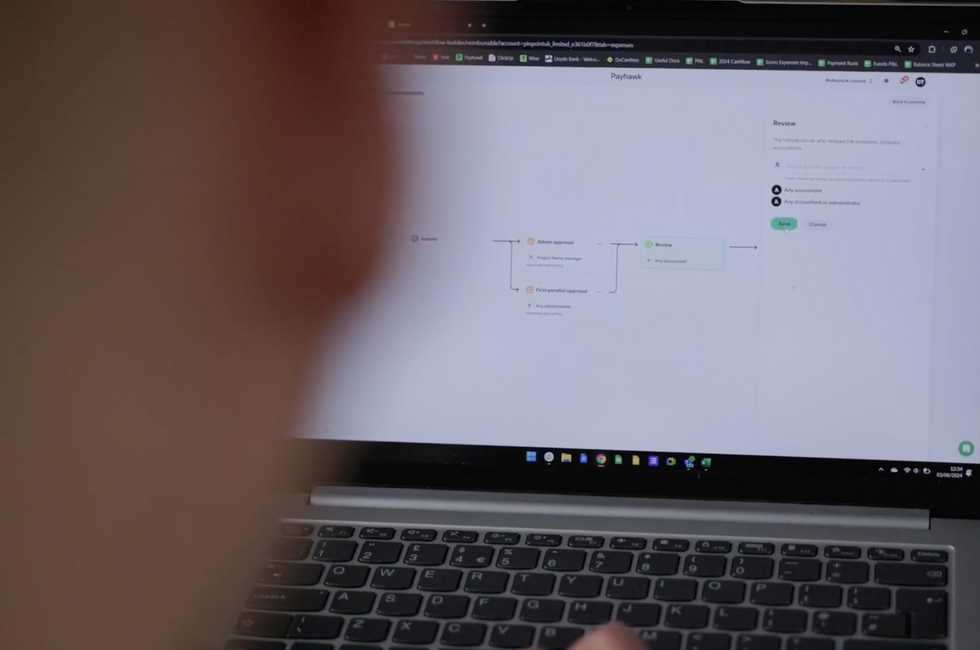
How to simplify complex accounting processes



Who enjoys complex processes? We’ll go out on a limb and say no one. When it comes to managing accounting processes, manual data entry and other draining tasks drag down team efficiency, and you can’t access accurate data to make decisions. Let’s change that.
By submitting this form, you agree to receive emails about our products and services per our Privacy Policy.
Accounting processes are an essential part of any business’s operations. If clients don’t get paid on time, you don’t get paid on time, or you can’t gain visibility into business finances, you’ll end up in a sticky situation.
If you rely on manual tasks — data entry, chasing invoice payments, reconciling payments, and more — you’re completely opening yourself up to complex processes and inviting human error and data inaccuracies, which can lead to reputational issues, revenue loss and a decline in company value.
Instead, you need to simplify processes and leverage smart technology and automation; here’s how…

How to overcome your reliance on manual accounts receivable processes
Relying on legacy accounts receivable management processes is a problem that many finance and accounting teams face. If you’re among them, your processes likely rely heavily on manual input, from issuing the invoice to reconciling, and are rife with time-consuming tasks, including overdue invoice chasing, manual reminder sending, and more.
Plus, you probably lack visibility or control over outstanding payments, making it challenging to forecast and manage cash flow, improve operations and report accurately on financial performance. Don’t worry — there’s a better way.
The solution:
Looking to optimise your processes and focus on what really matters? Think about leveraging tech tools like virtual corporate cards and expense management solutions as well as ERP systems to centralise your data.
And don’t forget to think about how your different solutions work together. At Payhawk, for example, we integrate seamlessly with many ERPs, including NetSuite and Microsoft Dynamics Business Central, as well as leading software providers, like Kolleno, for accounts receivable to help businesses receive digital payments easily.
Our partnership with Kolleno boosts data accuracy, automates workflows, and sends personalised invoice reminders to help organisations save time and stay on top of payments. Digital payments simplify reconciliation and eliminate old inefficiencies like cheque management, making accounts receivable processes smoother and more efficient.
A spend management solution that bridges the gap between employee expectation and business control requirements
The way you build your tech stack has massively changed. The ERP will always be the backbone, but you can bolt on best-in-class solutions with APIs. Then, you can easily balance governance and control over spending with a great employee user experience.
But if you build a bad finance tech stack or solutions that don’t talk or aren’t user-friendly, you can create a blocker for non-finance and finance engagement. Remove that barrier with good tech and change the relationship between finance and non-finance.
How? At Payhawk, we make it really easy for the employee to submit expenses while the finance team sets controls, tracks spend, and monitors automated reconciliation. Giving you the ‘best of both’. Here are some of the top benefits:
Supercharging finance teams:
- Unparalleled spending controls
- Real-time spending visibility
- Automation of more than 80% of manual accounting tasks
- Simplified operations with a single global provider
Effortless employee spending:
- Elimination of expense reports
- Easy (but controlled!) access to company funds
- Automation of approval processes
- Simplified budget management
How emerging technologies are paving the way for better accounting processes
Many accounting professionals still rely on manual journal entries at month-end, which takes up valuable time.
For example, if you manage a business with $100 million in revenue using QuickBooks Online, you might handle 85 manual journals each month. This includes numerous IFRS 15 and ASC 606 revenue recognition journals related to project accountant performance obligations. These can drain your time and energy and pull you away from more strategic business activities.
But there’s good news: At Payhawk, we’re all about automation. We automate data entry to help make month-end processes as efficient as possible. Finding employees making mistakes with account coding? Then, make it easier with dropdowns, custom fields, smart automation, rules, and more to stop data entry issues at the source and improve financial reporting.
Integrating your financial stack doesn’t have to be complex
At Payhawk, we excel at seamless integrations with accounting systems like NetSuite. To keep things running smoothly, it's crucial to sync data efficiently and bring in employee data from the HR system. Make sure you're using the right transaction types, proper accruals, and amortisation schedules in your accounting system — no shortcuts with journals!
To demonstrate how quick these integrations can be, our Senior Director of Solution Engineering, Robbie Hadfield, shares that the most recent integration he worked on took just under 20 minutes (18 minutes, 35 seconds, to be precise). So, simplifying your accounting processes is closer than you think.
How to pick the right technology to simplify your accounting processes
- Have the end goal in mind
Firstly, you need to hone in on your main pain point. Some tools address one main pain point, while others address multiple. Awareness of your priority pain point and other sticking points can mean you recognise real business value in the sales calls.
So, do your due diligence, take the sales call, and ask yourself, "Does this tech positively affect my accounting team?" Look at the solution holistically—i.e., how will it affect marketing? How you see the end goal will differ by organisation size, team, etc., so there's no clear-cut answer.
You don’t have to automate every finance function
You’ll know which functions you can and can’t trust to get things right off the bat. For example, you might want to spend time on budget and forecasting to hold your non-finance VPs accountable. Encouraging them to talk about the numbers helps build this culture of KPIs, which can be healthy. You might want to automate sending out the reports and get the PowerPoint deck, but you might not want to write the variants analysis automatically, for example.Preparing for tool team adoption
Engage team members early to help identify gaps and needs, then lay out your vision (including proposed technology and how it helps). Bring them along with you. This approach helps you as a leader identify gaps you hadn’t thought of, and you also need their understanding of where things will make these tech decisions.
Listen to what your team members want instead of telling them. Listening to the pain points gives you the most successful transition. And remember, adoption doesn’t happen overnight, so allocate time to that adoption. You don’t want to pay for something you’re not using, so you need everyone on board and ready to use it when it’s set up and integrated.
Your next steps
Want to learn more about Payhawk in action? Check out some of our recent stories. Or if you’re an accountant or ERP integrator, then learn more about our partner program here.
Trish Toovey works across the UK and US markets to craft content at Payhawk. Covering anything from ad copy to video scripting, Trish leans on a super varied background in copy and content creation for the finance, fashion, and travel industries.
Related Articles


6 tips to maximise efficiency with invoice processing and automation

